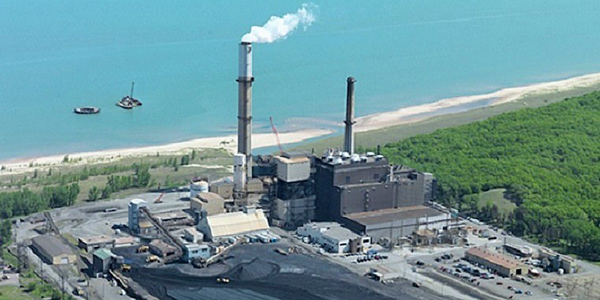By Amanda Durish Cook
NiSource is holding firm to its plan to retire half of its coal generation by 2023 while increasing infrastructure spending from already record levels, the company told Wall Street analysts Wednesday.
The company’s Northern Indiana Public Service Co. will close its 480-MW Bailly coal-fired plant near Chesterton, Ind., by mid-2018 and plans to shutter Units 17 and 18 (a combined 722 MW) at the 1,780-MW R.M. Schahfer plant near Wheatfield, Ind., by the end of 2023. (See NIPSCO Considers Closing 4 Coal Units in 7 Years.)
NiSource spokesman Nick Meyer confirmed that MISO in mid-December approved the Bailly coal plant retirement for May 31, 2018. Meyer said both retirements are primarily the result of “low market gas prices and an aging coal fleet.”
The retirements are part NIPSCO’s biannual integrated resource plan submitted to the Indiana Utility Regulatory Commission on Nov. 1. The plan is still awaiting commission approval.
During an earnings call, NiSource CEO Joseph Hamrock said the company’s IRP does not call for any new generation through 2019. A longer-term proposal to replace the capacity will come in the next IRP in 2018, the company said.
In 2015, about 70% of NIPSCO’s approximately 3,800-MW generation fleet was coal-fired. Natural gas generation comprises roughly 20% of NIPSCO capacity, the lion’s share at the 535-MW Sugar Creek Energy plant near Terre Haute, Ind.
While NiSource’s coal capacity will shrink, it expects its infrastructure spending to balloon. Hamrock said NiSource invested a record $1.5 billion in gas and electric utility infrastructure in 2016, including replacement of 406 miles of gas pipeline, 60 miles of underground cable and more than 1,200 electric poles.
Hamrock also reaffirmed the IRP’s proposal to upgrade its remaining coal fleet, with the utility asking regulators for approval to invest $400 million in environmental upgrades at the two remaining Schahfer units and its 580-MW Michigan City coal plant.
Hamrock highlighted the company’s gas base rate case settlement approvals in Kentucky, Maryland, Pennsylvania and Virginia, as well Indiana regulators’ approvals of a seven-year $824 million gas modernization plan and a settlement granting NIPSCO a $72.5 million annual electric rate increase.
Altogether, NiSource plans $20 billion in long-term gas infrastructure investments and $10 billion in long-term electric infrastructure spending. Hamrock said NiSource now expects to invest between $1.6 billion and $1.7 billion in infrastructure in 2017, up from a prior estimate of $1.5 billion.
“We’re committed to further reducing our greenhouse gas emissions through these continued gas modernization investments and planned coal-fired plant retirements as we diversify our electric generation portfolio,” Hamrock said. In early 2016, he noted, NiSource signed on for EPA’s Methane Challenge Program, committing to reduce methane emissions by 300 Mcf over five years.
NiSource reported 2016 income of $328.1 million ($1.02/share) from continuing operations, compared to 2015’s $198.6 million ($0.63/share). Fourth-quarter earnings from continuing operations were $88.8 million ($0.28/share) versus $64.4 million ($0.20/share).
2016 was the first fiscal year for NiSource as an exclusively regulated utility, following its separation from Columbia Pipeline Group in mid-2015.
Hamrock said NiSource added 33,000 new customers in 2016, the best growth in a decade. NiSource serves roughly 500,000 electric customers in northern Indiana and 3.5 million natural gas customers in seven states.





